Envisioned in the same spirit as the modern BMW-era Mini, new Fiat 500 and new VW Beetle, the Trabant nT remains very faithful to the original’s unmistakable people’s car design, yet moulds it into a completely modern high tech homage. A brilliantly styled retro car, the Trabant nT however ditches the dirty mechanicals and perilously dangerous body of the Communist-era original and instead utilizes a contemporary pure electric drive-train.
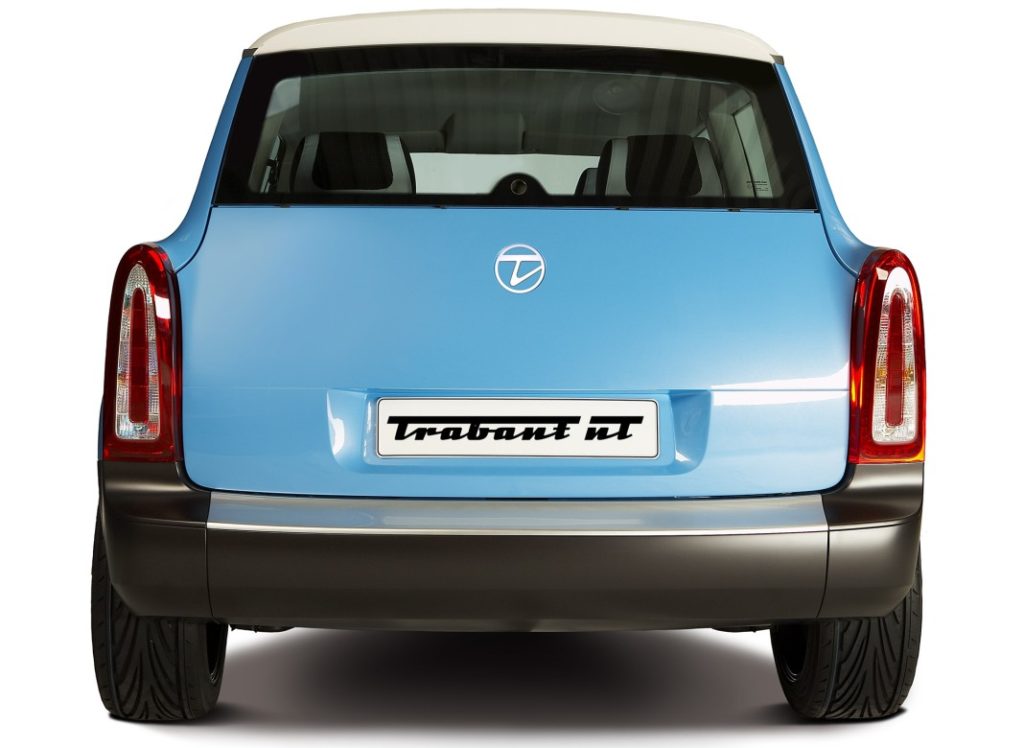 A Cold War Communist relic that went out of production as soon Germany re-united in 1991, the two decade absence seems to make Germans’ hearts fonder of the quirky and smoky tiny East German car. With enough time passed for the Trabant to have iconic, cult, ironic or kitsch appeal, the Commu-car re-make concept comes at a time of ironic cultural nostalgia or ‘Ostalgie’ for the GDR, with old Trabants and Wartburgs becoming minor collectibles and films like Goodbye Lenin box office successes. Unlike Skoda which went through an almost immediate transformation from eastern bloc laughing stock to modern VW variant, smoothed over by brilliant marketing campaign ironically using Skoda jokes, the Trabant nT cheekily appropriates the iconic style and name but is a clean break with its past incarnation and negative perceptions.
A Cold War Communist relic that went out of production as soon Germany re-united in 1991, the two decade absence seems to make Germans’ hearts fonder of the quirky and smoky tiny East German car. With enough time passed for the Trabant to have iconic, cult, ironic or kitsch appeal, the Commu-car re-make concept comes at a time of ironic cultural nostalgia or ‘Ostalgie’ for the GDR, with old Trabants and Wartburgs becoming minor collectibles and films like Goodbye Lenin box office successes. Unlike Skoda which went through an almost immediate transformation from eastern bloc laughing stock to modern VW variant, smoothed over by brilliant marketing campaign ironically using Skoda jokes, the Trabant nT cheekily appropriates the iconic style and name but is a clean break with its past incarnation and negative perceptions.
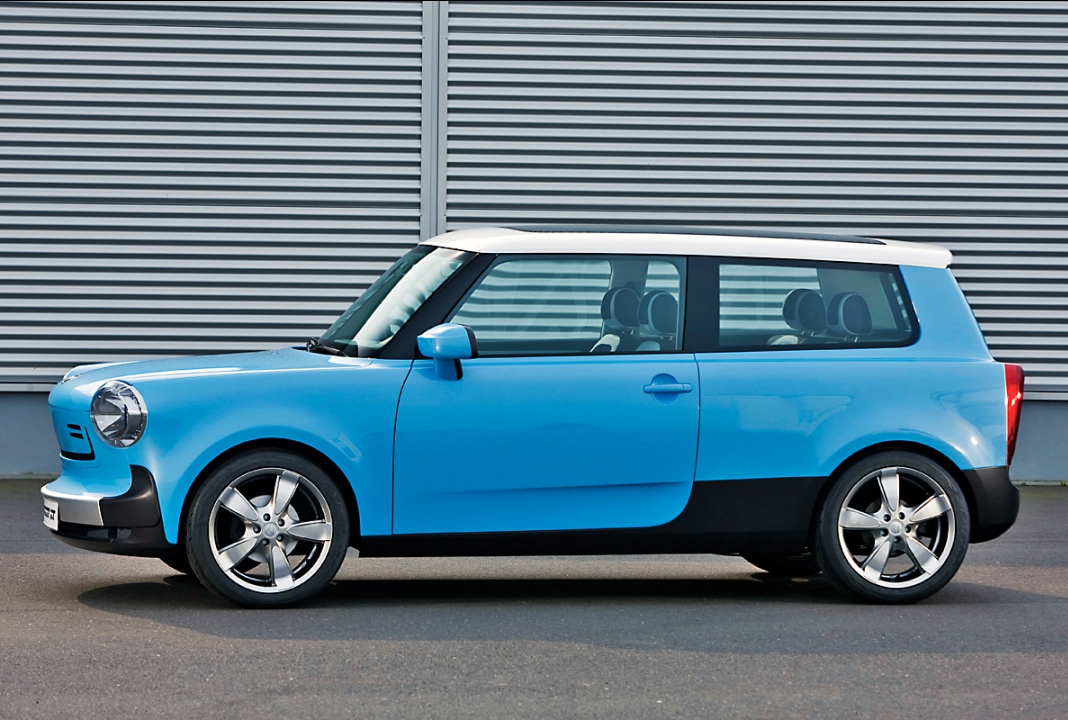 A painfully slow low-tech, low-rent endeavor, the original Trabant entered service in 1957 and went virtually unchanged until its demise. While Cold War Trabants’ average 28-year lifespan and recycled paper and fabric based bodies were great for the environment, their awful smoky two-stroke engines weren’t, while their bodies offered little crash protection and their basic cost and component-cutting mechanical design meant they were dynamically challenged and fire risks too. The Trabant nT however uses a modern and safe structural design and an all-electric drive-train for a futuristic take on green low cost motoring, which its makers say could yield overnight recharging costs of as little as one Euro in certain power grids and times.
A painfully slow low-tech, low-rent endeavor, the original Trabant entered service in 1957 and went virtually unchanged until its demise. While Cold War Trabants’ average 28-year lifespan and recycled paper and fabric based bodies were great for the environment, their awful smoky two-stroke engines weren’t, while their bodies offered little crash protection and their basic cost and component-cutting mechanical design meant they were dynamically challenged and fire risks too. The Trabant nT however uses a modern and safe structural design and an all-electric drive-train for a futuristic take on green low cost motoring, which its makers say could yield overnight recharging costs of as little as one Euro in certain power grids and times.
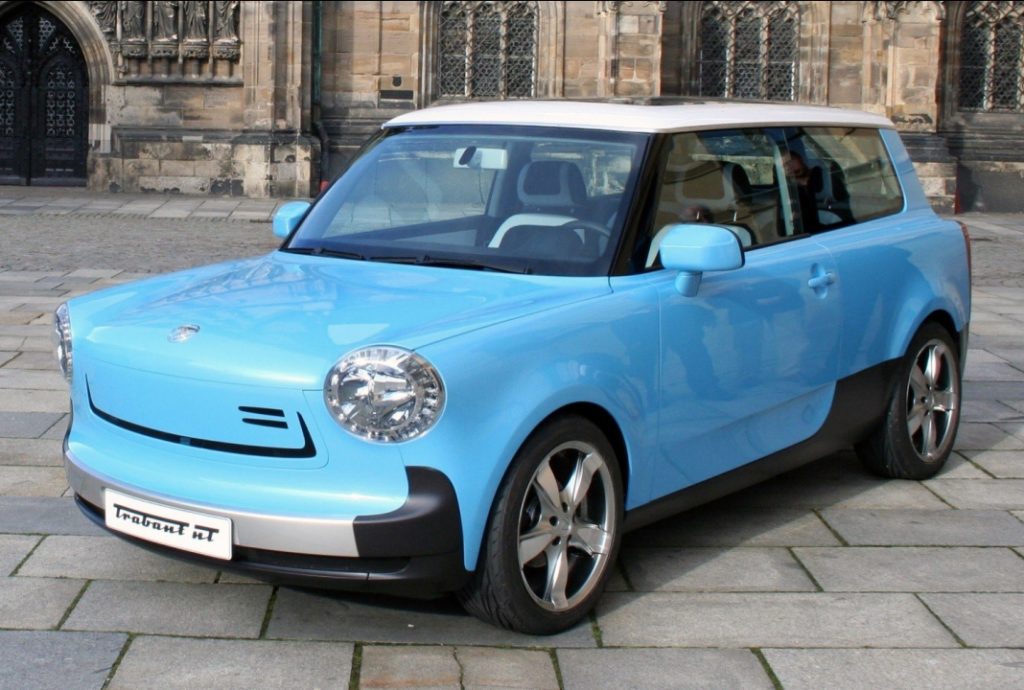 A highly stylized design that is faithful to the original Trabant’s stylistic features and general lines, the Trabant nT is however a contemporary interpretation that features slightly oval rather than round lights and softer edges top its rear fins and vertical lines and shark-nosed fascia. Like the original, the Trabant nT also features slim and discrete air intakes, while the modern concept however features an integrated bumper, larger mirrors and blacked out A- and B-pillars and a white roof, much like the current trend-setting Mini. Unlike the original’s grim and austere Cold War interior, the Trabant nT concept features two tone stitched leather steering wheel and soft touch dashboard finish. A retro-inspired funky circular complements a high set and jutting dashboard with large storage bins for a hunkered down ambiance.
A highly stylized design that is faithful to the original Trabant’s stylistic features and general lines, the Trabant nT is however a contemporary interpretation that features slightly oval rather than round lights and softer edges top its rear fins and vertical lines and shark-nosed fascia. Like the original, the Trabant nT also features slim and discrete air intakes, while the modern concept however features an integrated bumper, larger mirrors and blacked out A- and B-pillars and a white roof, much like the current trend-setting Mini. Unlike the original’s grim and austere Cold War interior, the Trabant nT concept features two tone stitched leather steering wheel and soft touch dashboard finish. A retro-inspired funky circular complements a high set and jutting dashboard with large storage bins for a hunkered down ambiance.
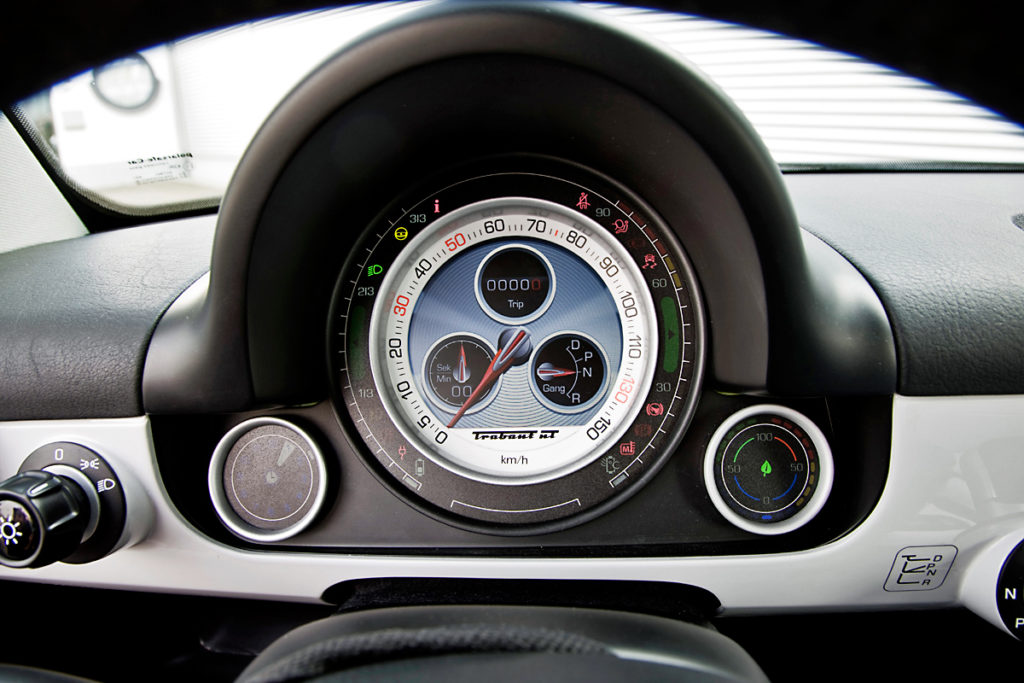 Powered by a 64HP electric motor, the light 1050kg Trabant nT can reach 130km/h, and while no 0-100km/h time is quoted, it’ll certainly be quicker than the 26HP 0.6-liter two-cylinder 1989 Trabant’s 21-seconds. A compact 3950mm long two-door hatchback, the Trabant nT accommodates four adults and one child, for total 400kg payload owing to torque-rich electric power. With a maximum 160km single charge range, the Trabant nT meets most German’s average 50km commute, and fully recharges its lithium-ion batteries in eight hours at 220V or two hours at 380V. Still at concept stage requiring further investment for production, the Trabant nT’s mass production prospects would be greater were it to also be offered with a modern small displacement economical turbo-diesel or turbo petrol engine like Fiat’s efficient 0.9-liter 85HP two-cylinder Twin Air engine.
Powered by a 64HP electric motor, the light 1050kg Trabant nT can reach 130km/h, and while no 0-100km/h time is quoted, it’ll certainly be quicker than the 26HP 0.6-liter two-cylinder 1989 Trabant’s 21-seconds. A compact 3950mm long two-door hatchback, the Trabant nT accommodates four adults and one child, for total 400kg payload owing to torque-rich electric power. With a maximum 160km single charge range, the Trabant nT meets most German’s average 50km commute, and fully recharges its lithium-ion batteries in eight hours at 220V or two hours at 380V. Still at concept stage requiring further investment for production, the Trabant nT’s mass production prospects would be greater were it to also be offered with a modern small displacement economical turbo-diesel or turbo petrol engine like Fiat’s efficient 0.9-liter 85HP two-cylinder Twin Air engine.
- Engine: Electric, central asynchronous
- Power, HP (kW): 64 (45)
- Top speed: 130km/h
- Battery: Lithium-ion
- Range: 160km
- Charging time, @220V / @380V: 8hr / 2hr
- Length: 3950mm
- Width: 1690mm
- Height: 1500mm
- Wheelbase: 2450mm
- Weight: 1050kg
- Payload: 400kg
- Doors / seats: 2 / 4+1


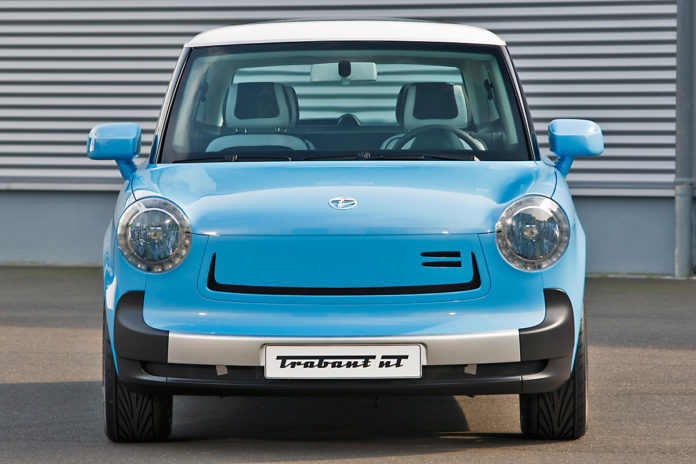

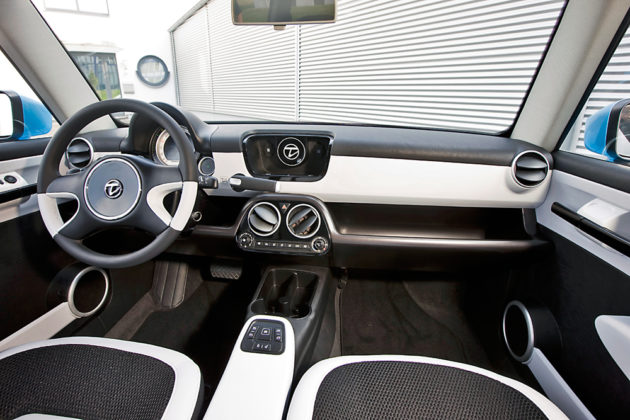
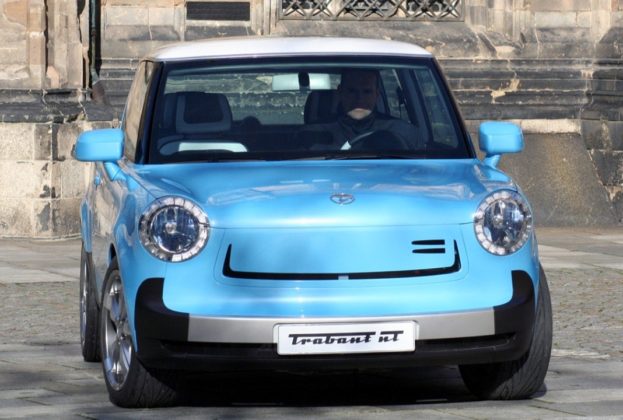
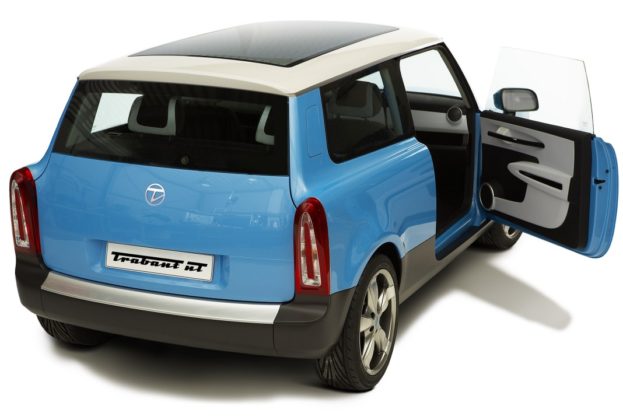
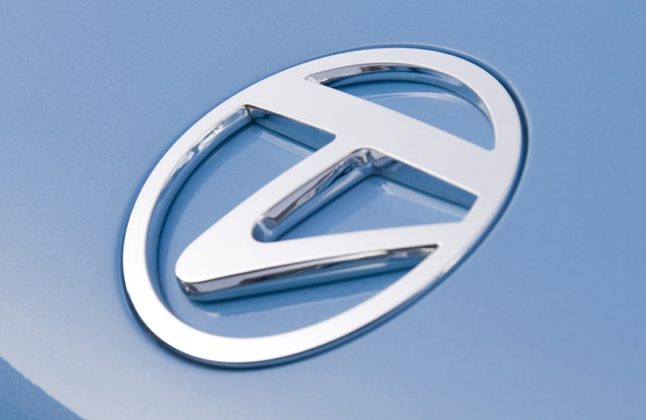

























Recent Comments